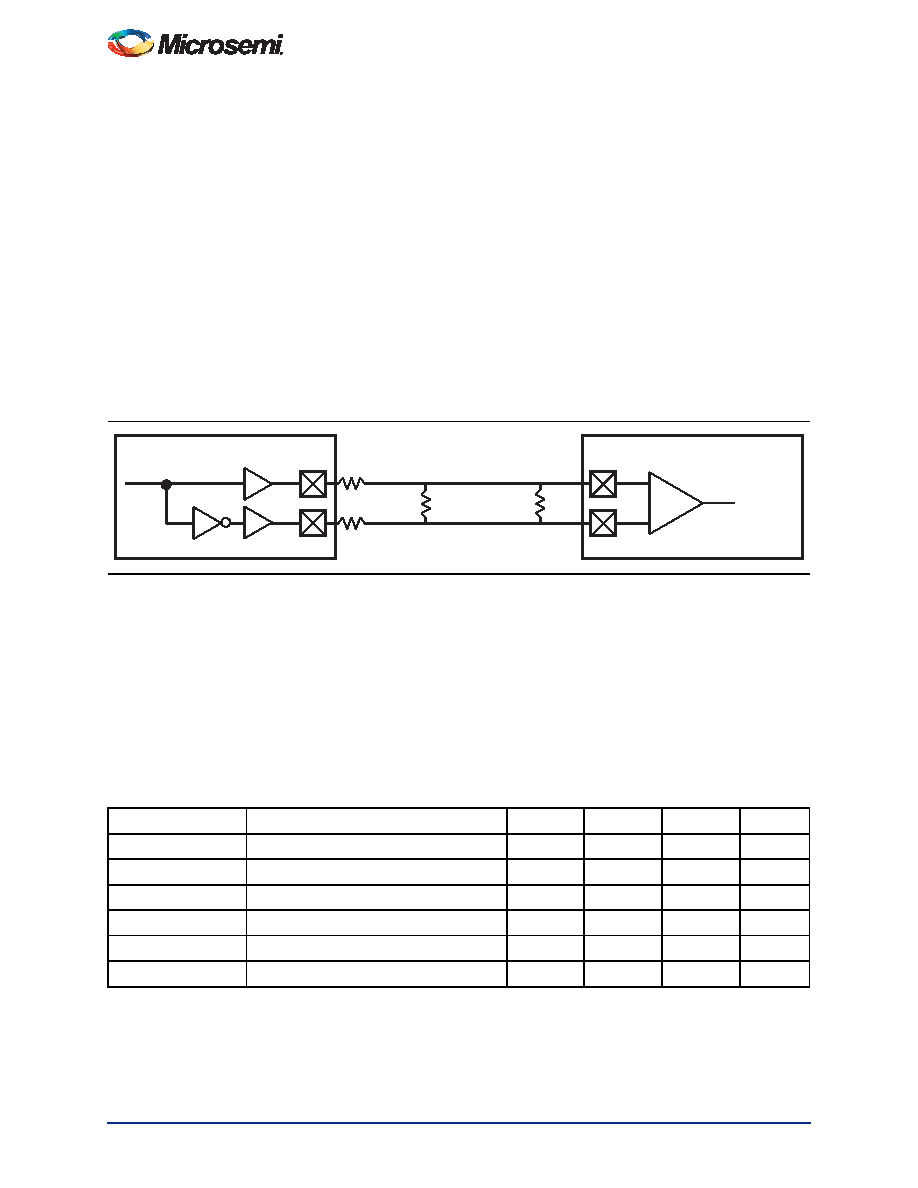- 您現(xiàn)在的位置:買賣IC網(wǎng) > PDF目錄4421 > AX250-1FGG484I (Microsemi SoC)IC FPGA AXCELERATOR 250K 484FBGA PDF資料下載
參數(shù)資料
| 型號: | AX250-1FGG484I |
| 廠商: | Microsemi SoC |
| 文件頁數(shù): | 224/262頁 |
| 文件大小: | 0K |
| 描述: | IC FPGA AXCELERATOR 250K 484FBGA |
| 標(biāo)準(zhǔn)包裝: | 40 |
| 系列: | Axcelerator |
| 邏輯元件/單元數(shù): | 2816 |
| RAM 位總計: | 55296 |
| 輸入/輸出數(shù): | 248 |
| 門數(shù): | 250000 |
| 電源電壓: | 1.425 V ~ 1.575 V |
| 安裝類型: | 表面貼裝 |
| 工作溫度: | -40°C ~ 85°C |
| 封裝/外殼: | 484-BGA |
| 供應(yīng)商設(shè)備封裝: | 484-FPBGA(23x23) |
第1頁第2頁第3頁第4頁第5頁第6頁第7頁第8頁第9頁第10頁第11頁第12頁第13頁第14頁第15頁第16頁第17頁第18頁第19頁第20頁第21頁第22頁第23頁第24頁第25頁第26頁第27頁第28頁第29頁第30頁第31頁第32頁第33頁第34頁第35頁第36頁第37頁第38頁第39頁第40頁第41頁第42頁第43頁第44頁第45頁第46頁第47頁第48頁第49頁第50頁第51頁第52頁第53頁第54頁第55頁第56頁第57頁第58頁第59頁第60頁第61頁第62頁第63頁第64頁第65頁第66頁第67頁第68頁第69頁第70頁第71頁第72頁第73頁第74頁第75頁第76頁第77頁第78頁第79頁第80頁第81頁第82頁第83頁第84頁第85頁第86頁第87頁第88頁第89頁第90頁第91頁第92頁第93頁第94頁第95頁第96頁第97頁第98頁第99頁第100頁第101頁第102頁第103頁第104頁第105頁第106頁第107頁第108頁第109頁第110頁第111頁第112頁第113頁第114頁第115頁第116頁第117頁第118頁第119頁第120頁第121頁第122頁第123頁第124頁第125頁第126頁第127頁第128頁第129頁第130頁第131頁第132頁第133頁第134頁第135頁第136頁第137頁第138頁第139頁第140頁第141頁第142頁第143頁第144頁第145頁第146頁第147頁第148頁第149頁第150頁第151頁第152頁第153頁第154頁第155頁第156頁第157頁第158頁第159頁第160頁第161頁第162頁第163頁第164頁第165頁第166頁第167頁第168頁第169頁第170頁第171頁第172頁第173頁第174頁第175頁第176頁第177頁第178頁第179頁第180頁第181頁第182頁第183頁第184頁第185頁第186頁第187頁第188頁第189頁第190頁第191頁第192頁第193頁第194頁第195頁第196頁第197頁第198頁第199頁第200頁第201頁第202頁第203頁第204頁第205頁第206頁第207頁第208頁第209頁第210頁第211頁第212頁第213頁第214頁第215頁第216頁第217頁第218頁第219頁第220頁第221頁第222頁第223頁當(dāng)前第224頁第225頁第226頁第227頁第228頁第229頁第230頁第231頁第232頁第233頁第234頁第235頁第236頁第237頁第238頁第239頁第240頁第241頁第242頁第243頁第244頁第245頁第246頁第247頁第248頁第249頁第250頁第251頁第252頁第253頁第254頁第255頁第256頁第257頁第258頁第259頁第260頁第261頁第262頁

Detailed Specifications
2- 50
R e v i sio n 1 8
Differential Standards
Physical Implementation
Implementing differential I/O standards requires the configuration of a pair of external I/O pads, resulting
in a single internal signal. To facilitate construction of the differential pair, a single I/O Cluster contains the
resources for a pair of I/Os. Configuration of the I/O Cluster as a differential pair is handled by Designer
software when the user instantiates a differential I/O macro in the design.
Differential I/Os can also be used in conjunction with the embedded Input Register (InReg), Output
Register (OutReg), Enable Register (EnReg), and Double Data Rate (DDR). However, there is no
support for bidirectional I/Os or tristates with these standards.
LVDS
Low-Voltage Differential Signal (ANSI/TIA/EIA-644) is a high-speed, differential I/O standard. It requires
that one data bit is carried through two signal lines, so two pins are needed. It also requires an external
resistor termination. The voltage swing between these two signal lines is approximately 350 mV.
The LVDS circuit consists of a differential driver connected to a terminated receiver through a constant-
impedance transmission line. The receiver is a wide-common-mode-range differential amplifier. The
common-mode range is from 0.2 V to 2.2 V for a differential input with 400 mV swing.
To implement the driver for the LVDS circuit, drivers from two adjacent I/O cells are used to generate the
differential signals (note that the driver is not a current-mode driver). This driver provides a nominal
constant current of 3.5 mA. When this current flows through a 100
Ω termination resistor on the receiver
side, a voltage swing of 350 mV is developed across the resistor. The direction of the current flow is
controlled by the data fed to the driver.
An external-resistor network (three resistors) is needed to reduce the voltage swing to about 350 mV.
Therefore, four external resistors are required, three for the driver and one for the receiver.
Figure 2-25 LVDS Board-Level Implementation
140
Ω
100
Ω
ZO = 50
Ω
ZO = 50
Ω
165
Ω
165
Ω
+
–
P
N
P
N
INBUF_LVDS
OUTBUF_LVDS
FPGA
Table 2-56 DC Input and Output Levels
DC Parameter
Description
Min.
Typ.
Max.
Units
VCCI1
Supply Voltage
2.375
2.5
2.625
V
VOH
Output High Voltage
1.25
1.425
1.6
V
VOL
Output Low Voltage
0.9
1.075
1.25
V
VODIFF
Differential Output Voltage
250
350
450
mV
VOCM
Output Common Mode Voltage
1.125
1.25
1.375
V
VICM2
Input Common Mode Voltage
0.2
1.25
2.2
V
Notes:
1. ±5%
2. Differential input voltage = ±350 mV.
相關(guān)PDF資料 |
PDF描述 |
|---|---|
| AMM28DRSD | CONN EDGECARD 56POS DIP .156 SLD |
| ESC65DRYS-S93 | CONN EDGECARD 130PS DIP .100 SLD |
| ABC44DRYI-S93 | CONN EDGECARD 88POS DIP .100 SLD |
| 3357-5125 | CONN D-SUB SOCKET 25POS SHELL |
| FMC15DRAS-S734 | CONN EDGECARD 30POS .100 R/A SLD |
相關(guān)代理商/技術(shù)參數(shù) |
參數(shù)描述 |
|---|---|
| AX250-1FGG484M | 制造商:Microsemi Corporation 功能描述:FPGA AXCELERATOR 154K GATES 2816 CELLS 763MHZ 0.15UM 1.5V 48 - Trays 制造商:Microsemi Corporation 功能描述:IC FPGA 248 I/O 484FBGA 制造商:Microsemi Corporation 功能描述:IC FPGA AXCELERATOR 250K 484FBGA |
| AX250-1FGG896 | 制造商:ACTEL 制造商全稱:Actel Corporation 功能描述:Axcelerator Family FPGAs |
| AX250-1FGG896B | 制造商:ACTEL 制造商全稱:Actel Corporation 功能描述:Axcelerator Family FPGAs |
| AX250-1FGG896I | 制造商:ACTEL 制造商全稱:Actel Corporation 功能描述:Axcelerator Family FPGAs |
| AX250-1FGG896M | 制造商:ACTEL 制造商全稱:Actel Corporation 功能描述:Axcelerator Family FPGAs |
發(fā)布緊急采購,3分鐘左右您將得到回復(fù)。